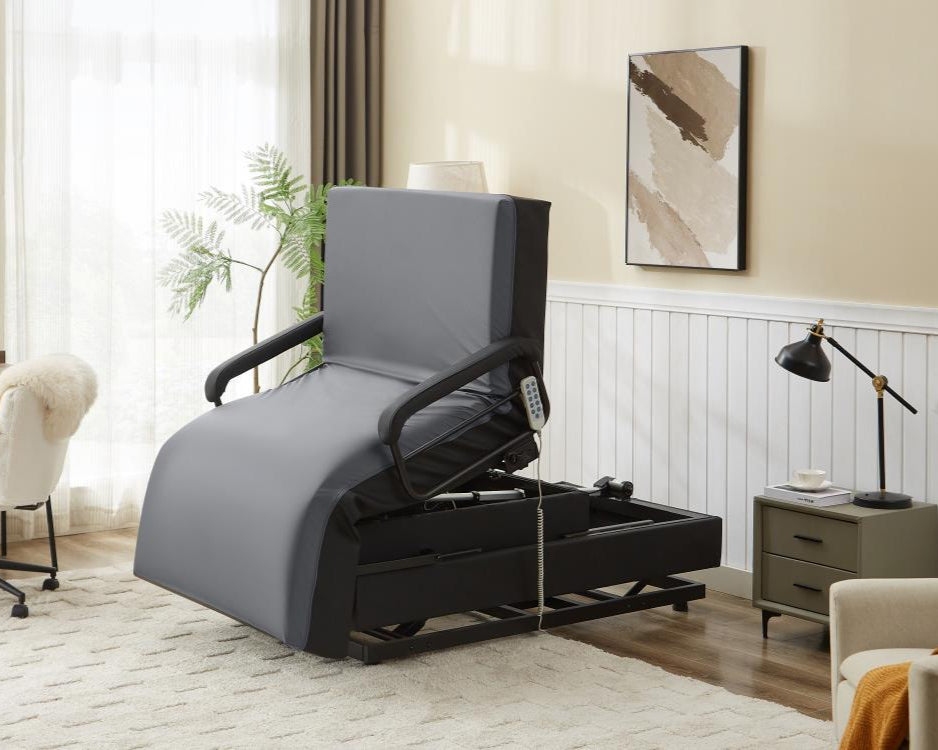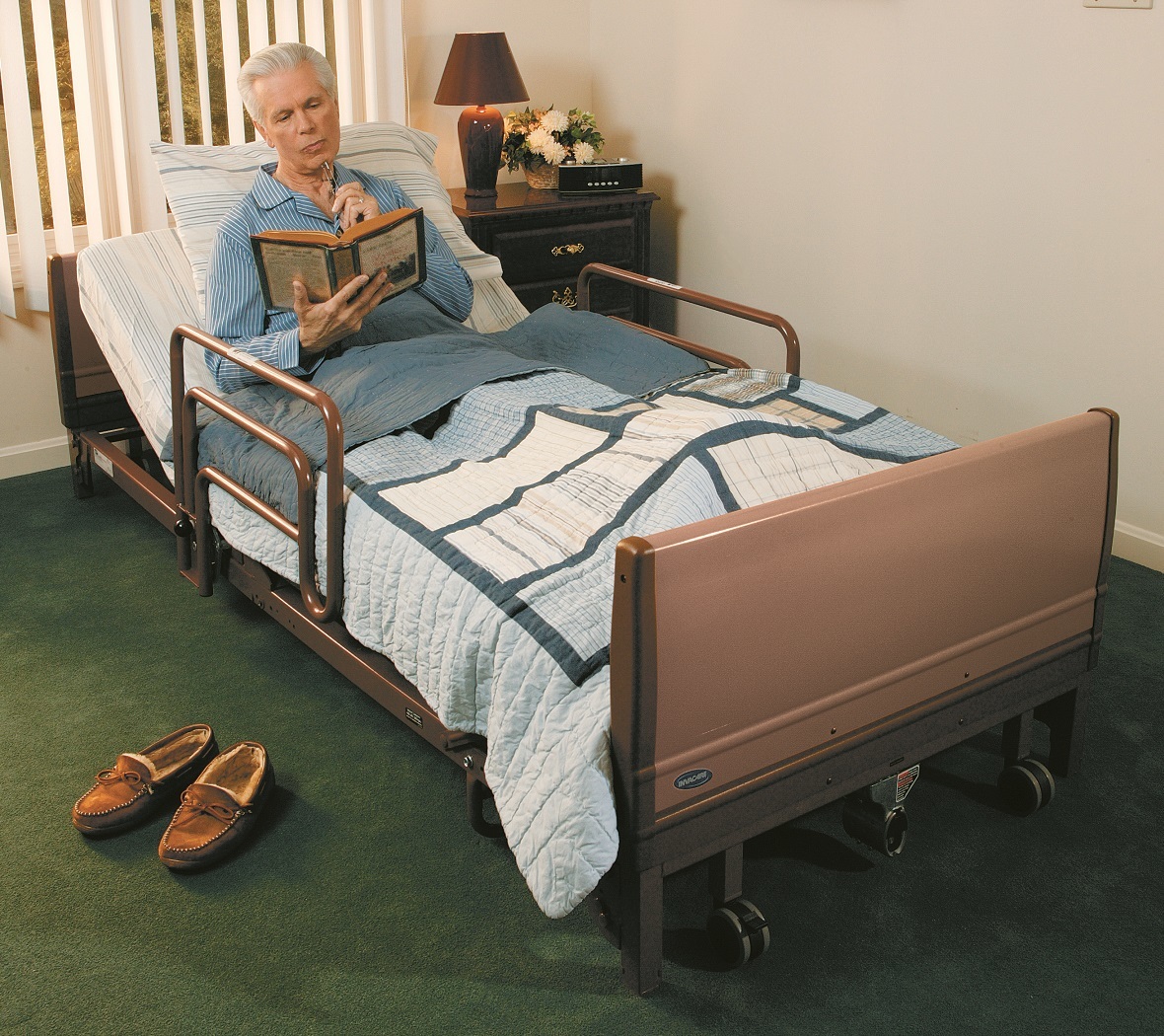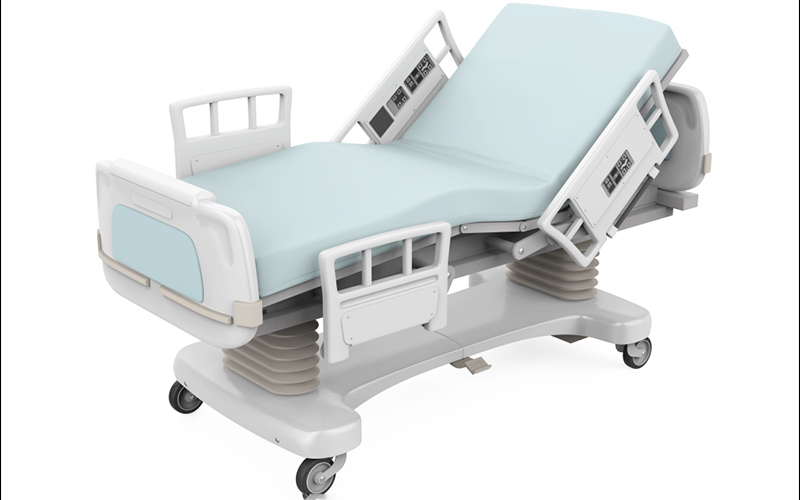The 15-Second Trick For Hospital Beds For Home Use
Table of Contents5 Easy Facts About Hospital Beds For Home Use DescribedHospital Beds For Home Use - QuestionsThe Facts About Hospital Beds For Home Use UncoveredRumored Buzz on Hospital Beds For Home UseSome Ideas on Hospital Beds For Home Use You Should KnowNot known Facts About Hospital Beds For Home UseThe Hospital Beds For Home Use Diaries
There are 3 main kinds of healthcare facility beds: manual, semi-electric, and fully-electric. These beds make use of hand cranks to readjust the bed's elevation and raise and reduce the head and the foot.
Semi-electric beds have an electrical motor to elevate and reduce the head and foot portions of the bed. Clients and caretakers adjust the placing by pressing switches making use of a hand pendant. The height of the bed is changed by hand with a hand crank. Full-electric beds have an electrical motor that can raise the head and foot areas of the bed in addition to the entire height and positioning of the bed.
The Basic Principles Of Hospital Beds For Home Use
There are numerous kinds of hospital beds, each made to satisfy certain individual demands. Below are some typical types: This is the most usual type of health center bed, developed for basic clinical usage.
Lower to the ground than a conventional bed. This kind of bed is developed for bigger clients, with a bigger structure and higher weight capability than a basic bed. This kind of bed is created specifically for children, with smaller sized sizes than a standard bed. Special features such as complete length side rails and cartoon design.
This sort of bed is developed for seriously sick people that need open surveillance and specialized clinical devices such as ventilators and infusion pumps. This sort of bed is designed for usage during labor and distribution, with flexible placements and attributes to sustain the mom and child during the birth procedure.
The 6-Minute Rule for Hospital Beds For Home Use
Multiple function and the accessories execute expanding traction to different components of the vertebra and the extremities without relocating the body. These are just a few examples of the kinds of healthcare facility beds available. The specific kind of bed made use of will certainly depend upon the client's problem, clinical demands, and various other aspects.
Right here is the important things you require to understand. A one-function medical facility bed is a clinical bed that permits an individual to relocate just the head or foot area up or down. A 2 feature healthcare facility bed commonly describes a sort of medical bed that has two flexible features to help patients in healthcare facilities or care facilities.

The Single Strategy To Use For Hospital Beds For Home Use
A 7-function ICU bed is a kind of medical bed that offers several adjustable features to sustain critically sick individuals in a critical care unit (ICU) (hospital beds for home use). The seven features typically include: Backrest modification: The back-rest can be adjusted to numerous angles to help the person rest up or rest pleasantly
Height adjustment: The bed can be increased or lowered to make it much easier for patients to get in and out of bed, and for caregivers to give treatment. Trendelenburg placement: The whole bed can be slanted to advertise blood circulation and flow in the body. Reverse Trendelenburg placement: The bed can likewise be slanted in the opposite instructions to promote blood circulation and flow in the upper body.
1. What Size is a Medical Facility Bed? 2. Just how much Does a Hospital Bed Cost? 3. Why Do Medical Facility Beds Have Side Bed Rails? 4. What Are The Key Health Center Bed Components?. While even more economical than electric designs, these beds require physical effort for adjustments. The major benefits of manual beds are their affordability and integrity, as they Recommended Reading don't rely on electrical power. However, the requirement for hands-on initiative can be a restriction in circumstances where fast adjustments are essential or where caretakers face physical challenges.
Some Known Details About Hospital Beds For Home Use
They are appropriate for people that need minimal repositioning for comfort or clinical demands. Semi-electric medical facility beds provide an equilibrium of guidebook and electrical controls. The head and foot areas are usually changed with electric controls, while the elevation is changed manually. These beds provide an excellent happy medium in between guidebook and totally electric options, offering ease of usage without the full cost of electric designs.
Semi-electric beds are appropriate for people who need moderate changes to the head and foot areas but can take care of without regular height changes. This makes them a cost-effective solution for those seeking comfort and benefit without the need for constant repositioning. Totally electrical hospital beds feature electrical controls for seamless adjustments to the elevation, head, and foot areas.
Specialized health center beds, such as ICU beds, long-term care beds, and bariatric beds, are carefully developed to address certain medical needs. These beds use customized look after varied client teams, enhancing both results and convenience. In the complying with sections, we will discover the primary kinds of specialty medical facility beds, detailing their certain advantages and applications.
With years of experience in producing electrical linear actuators - hospital beds for home use and close collaboration with the health care sector, TiMOTION is well-positioned to offer dependable healthcare solutions. Our vertically integrated firm takes care of every action of the manufacturing process, from layout to actuator assembly, guaranteeing we provide exceptional value and customized services customized to your specific requirements
The Best Strategy To Use For Hospital Beds For Home Use

To read more regarding integrating these innovations right into your items, call us today. More analysis:.
Data is sourced from the Medicare Price Report. Accessed January 2025. Temporary severe treatment hospitals have the greatest average variety of beds at 187. They are one of the most common type helpful hints of medical facility about his in the U.S. and comprise even more than 50% of united state healthcare facilities. Children's health centers have 178 beds typically and VA healthcare facilities typical 175 beds.

Rumored Buzz on Hospital Beds For Home Use
A medical facility bed is a bed made particularly for medical objectives. It is not only an area for patients to rest, however also a system for clinical procedures. Unlike normal home beds, hospital beds generally have adjustable features, which can assist in clinical personnel to make different changes according to the demands of clients, such as changing the height, inclination, and assistance angle of the back and legs of the bed.